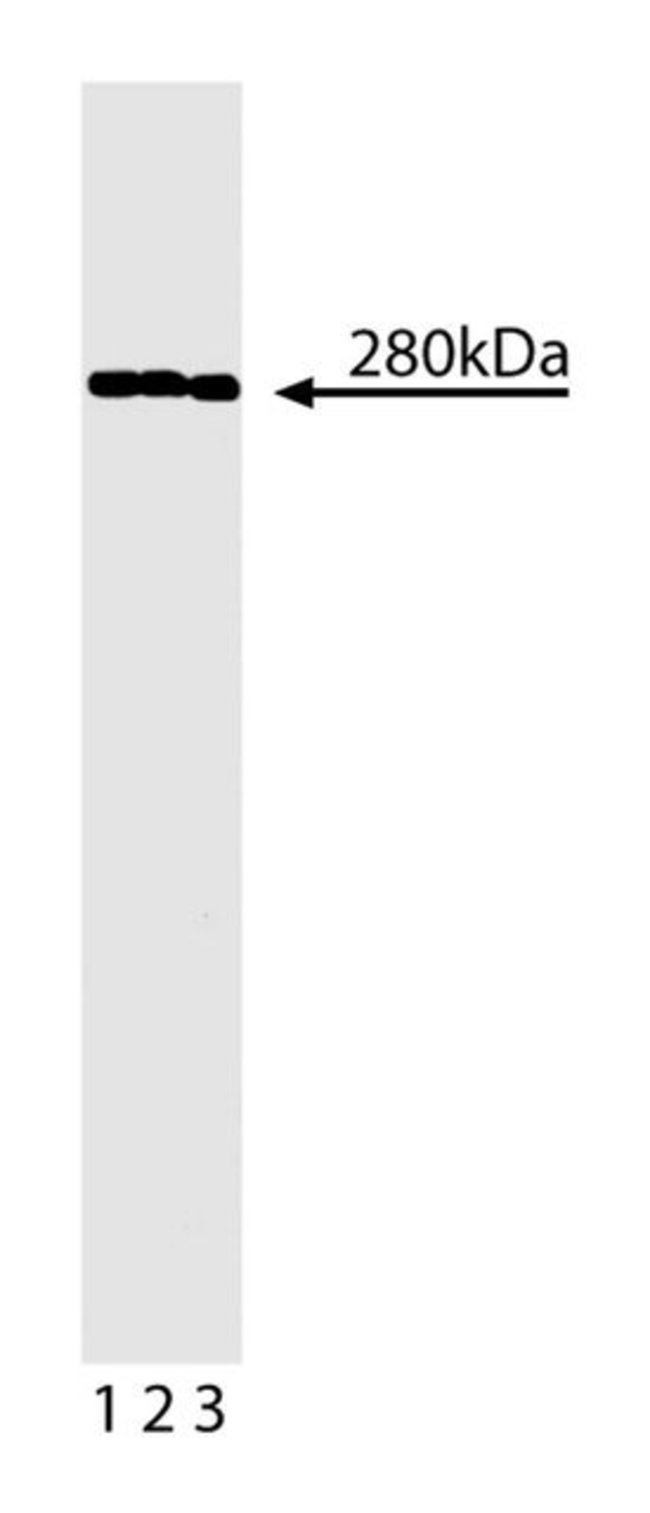eta;-Spectrin II Mouse, Unlabeled, Clone: 42, BD, Mouse Monoclonal Antibody, Each

Details:
Spectrins are central components of the cytoskeleton that form a scaffold below the plasma membrane. Spectrins contain two subunits, α and β, which intertwine to form heterodimers that can self associate into elongated tetramers. α-spectin I and β-spectrin I form heterodimers in red blood cells, while nonerythroid mammalian cells contain heterodimers of α-spectin I and II with β-spectrin I to V. The structure of spectrins includes a succession of triple-helical repeats alongwith various domains, such as SH3 domain, EF hands, PH domains, and binding domains for ankyrin, actin, band 4.1, and calmodulin. α-spectrin II is a widely expressed non-erythroid α-spectrin that contains an SH3 domain, a calmodulin binding site, and two cleavage sites for proteases, such as calpains and caspase-3. β-spectrin II is a widely expressed non-erythroid β-spectrin that contains a C-terminal region that interacts with α-spectrins and a PH domain. α-spectrin II and β-spectrin II, like many other spectrins, can form heterodimers that can self associate into tetramers, as well as interact with Band 4.1, F-actin, and other proteins near the plasma membrane. This scaffold of cytoskeletal and plasma membrane proteins is critical for the maintenance of cell structure.Immunofluorescence, Western Blotting
Additional Information
| SKU | 10135600 |
|---|---|
| UOM | Each |
| UNSPSC | 12352203 |
| Manufacturer Part Number | 612562 |

